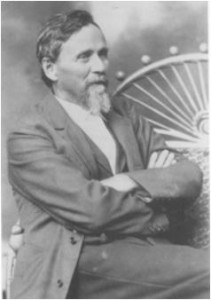Osteopathy is a system of healthcare which focuses mainly on the musculoskeletal system. The musculoskeletal system comprises all of the bones, muscles, ligaments, tendons, interconnecting joints and connective tissue that make up the human frame. If you have pain anywhere in your body that is caused by any of these components, it is very likely that osteopathy can help in relieving your symptoms and achieving a good recovery. You can read about conditions affecting various parts of the body here.
The guiding principle of osteopathy is that the body has enormous power to heal itself and that recovery from many musculoskeletal problems can often be achieved without medication or invasive surgery. This is done by identifying the cause of any musculoskeletal “dysfunction” as well as the areas that may be causing pain; these may or may not be the same area. Often, pain can arise from dysfunction in one area due to the body trying to compensate for a fundamental problem in another area. When the limits of compensation and adaptability of the musculoskeletal system are exceeded, dysfunction ensues and the result is perceived as pain.
Osteopaths are highly trained in unravelling this mystery of cause and effect. What you perceive as the painful area will normally be treated, but we will also look at what could be the root cause of the problem. If we don’t treat the root cause, the problem is likely to recur. This is part of the problem with the “biomedical approach” to healthcare which tends to treat the symptoms of disease rather than the root cause. In osteopathy, both aspects are addressed. This is not to say that osteopathy is superior in any way; on the contrary, traditional medicine is extremely powerful. Our philosophy as osteopaths is to use “manual medicine” where it is appropriate alongside traditional medicine.
Diagnosis of the root cause of pain and musculoskeletal dysfunction is further complicated by the nervous system. Nerves are the pathways through which pain is perceived in the brain and they can often create false readings through “referred pain” to other areas. There are many mechanisms of pain referral which osteopaths can distinguish through testing of pain perception coupled with detailed knowledge of referral patterns and nerve entrapment sites. Many “non-musculoskeletal” problems can also refer pain to other areas, for example angina can refer pain to the left shoulder, the gall bladder can refer pain to the right shoulder. Osteopaths are trained to screen for these problems and make sure that your condition can be treated effectively using osteopathic techniques.
 Osteopathic Medicine has been practiced for over 120 years, having been developed in the USA by Andrew Taylor-Still in the late nineteenth century. It is a system of healthcare that relies on the self-healing mechanisms inherent in the human body, by removing barriers to recovery and encouraging movement. Movement is essential for life and when movement of any component becomes impaired, this creates dysfunction and pain. We aim to restore good mobility, promote and maintain tissue health and optimise good functioning and range of movement of joints for every patient. In the USA, osteopaths have the same status as medical physicians, using manual medicine alongside traditional medicine.
Osteopathic Medicine has been practiced for over 120 years, having been developed in the USA by Andrew Taylor-Still in the late nineteenth century. It is a system of healthcare that relies on the self-healing mechanisms inherent in the human body, by removing barriers to recovery and encouraging movement. Movement is essential for life and when movement of any component becomes impaired, this creates dysfunction and pain. We aim to restore good mobility, promote and maintain tissue health and optimise good functioning and range of movement of joints for every patient. In the USA, osteopaths have the same status as medical physicians, using manual medicine alongside traditional medicine.
You can read more about osteopathy on the Institute of Osteopathy website.
ClaphamOsteopath.co.uk
Appointments: 0207 118 9904 or 07918 107393
Email: peter@claphamosteopath.co.uk
Back to Home Page


